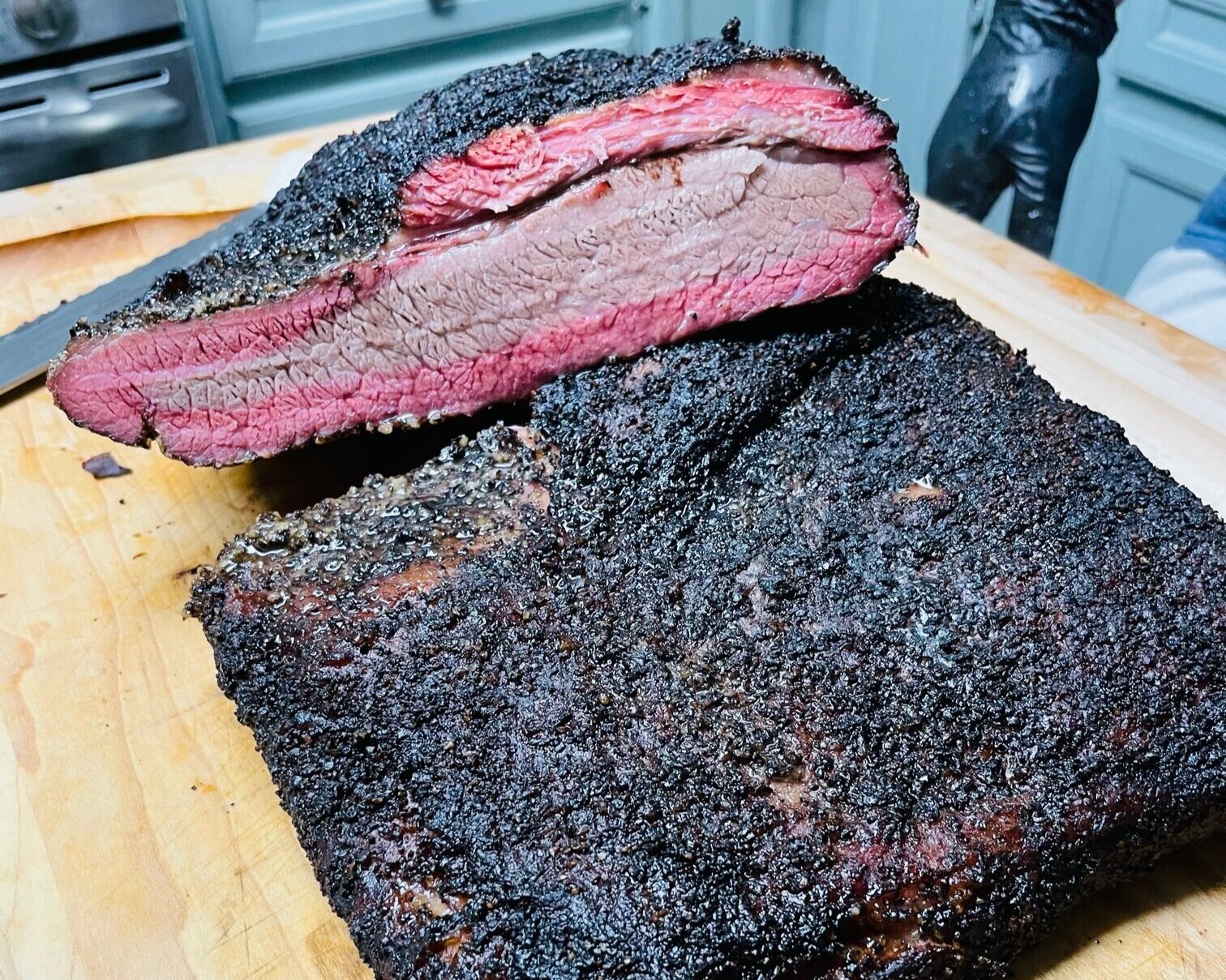Smoke Rings: What Do They Mean?
The elusive smoke ring is regarded as a sign of exceptional BBQ in many professional and amateur BBQ circles.
Today, we’re going to talk about where they come from and whether they serve a purpose or not.
BY: BREANNA STARK
Since the dawn of the age of food safety, one of the most popular rules of thumb is that pinkness or redness in meat is a sign that it is undercooked. But, if you’re ever eating smoked meat and you see a distinct pink or red ring around the edge of the meat, or right up next to the bone, that is called a smoke ring. It is not an indicator of doneness or the internal temperature of the meat. You will frequently find that smoked meat has a pink tinge to it. It is still fully cooked and completely safe to eat (YES, even CHICKEN!).
Where do they come from?
Smoke rings are the result of a chemical reaction between the myoglobin in the meat and the nitrous oxide in the smoke. When wood burns, it produces both nitrous oxide and carbon monoxide gas. When meat is smoked, it’s generally exposed to these gases for hours upon hours at a time.
What is myoglobin? It’s a protein found in the cells of animals that bind iron and oxygen. Myoglobin is what gives raw meat it’s red color. Myoglobin is easily broken down with other cooking methods (e.g. roasting or grilling), but when it comes into contact with the nitrous oxide in smoke, it will bind with the gas and hang on to that red color.
So, what do they mean?
For as long as I can remember, seasoned pitmasters and backyard barbeque enthusiasts alike have worn a prominent smoke ring as a badge of honor when they are smoking meat, especially brisket. But, at the end of the day, a smoke ring has absolutely ZERO to do with the flavor of the meat, nor the quality of the pitmaster that produced it. A smoke ring is simply a sign that the meat underwent a chemical reaction due to the low-and-slow smoking style in which it was prepared.
Do you have more questions about smoke rings? Feel free to drop me an email!
